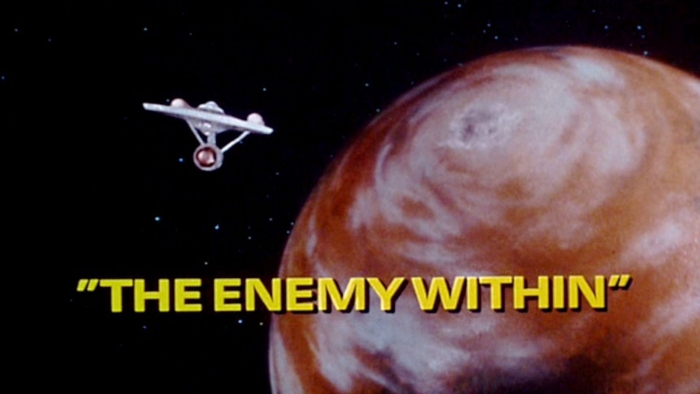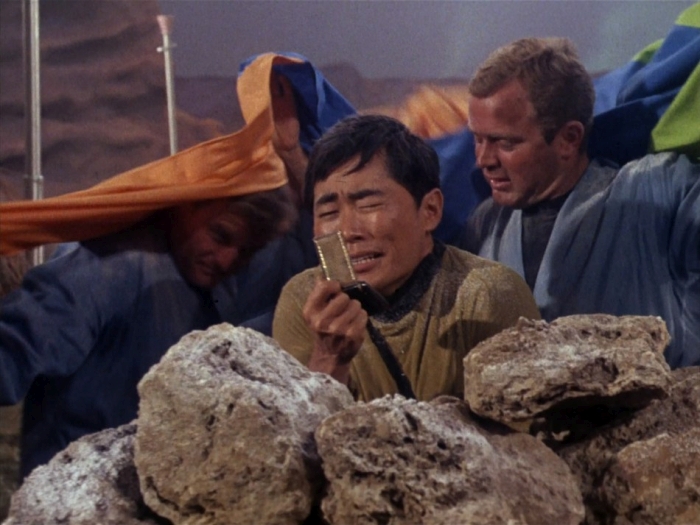During a minerals-gathering mission on planet Alpha 177 by the crew of the Enterprise, a transporter accident creates an evil duplicate of Captain Kirk.

In the episode the malfunction is explained by the interference of a yellow ore, collected on the alien planet’s surface, with the transporter’s circuits. The ore is not identified in the episode, but seems to consist of some alien mineral.
In many episodes of Star Trek the crew of the Enterprise visits mining colonies or is on a mission to search for valuable minerals and crystals. There exists even a geological tricorder, designed for analyzing rock samples and comparing them to the records memorized in the mineralogical database of the federation. By convention, the names of terrestrial minerals end with the suffix „-ite“, the denominations of elements with the suffix „- ium“, „-um“, „-on“, „-gen“ or „-ine“. Unfortunately it seems that this nomenclature is not always applied with the necessary scientific scrutiny in the 23th century.

There are around 5,000 to 7,000 minerals known on Earth, but we still know little about the mineralogy of other worlds. Over 300 minerals have been identified in meteorites so far. Meteorites display a mineral composition different to most rocks found on Earth. The most common type are stony meteorites, consisting of silicate minerals like olivine, pyroxene and traces of iron-nickel alloys. Just 1% of meteorites are pure silicate rocks. The smell of some fragments resembles asphalt or solvents, evidence for 4.6 billion years old carbon-compounds preserved inside the rock. 4 to 5% of all space debris is represented by iron meteorites, consisting of an almost pure iron-nickel alloy with eventually embedded small crystals of silicate minerals.
Around 130 minerals were discovered on Mars and 80 to 100 on the Earth’s Moon. Most are also found on Earth, however, as some of those minerals were formed under conditions that don’t exist on Earth, such as low gravity or the complete absence of liquid water, some are indeed unknown, alien minerals.

There are about 15,300 possible ways to combine all known elements, so there may be even more alien minerals out there.
The mineralogy of an exoplanet depends on its chemical composition. By analyzing the light of a star, it is possible to identify the chemical composition of distant star systems. As the star and the planets form from the same accretion disk, knowing the chemical composition of the star can provide also some information on the chemical composition of the planets orbiting the star.
The exoplanet 55 Cancri -e is roughly twice Earth’s radius, but has just eight times its mass. Its specific density is too low if compared to Earth. Earth is composed mostly of iron, oxygen, magnesium and silicon, with some sulfur, nickel, calcium and aluminum added to the mix. Observing the composition of the 55 Cancri-e’s host star, astronomers discovered a high concentration of carbon and oxygen. It’s likely that most minerals on 55 Cancri-e are based on a combination of the two elements, forming minerals with a low specific density. Surprisingly enough, carbon minerals are quite rare on Earth. Just fifty have been identified on Earth, and most are associated with life, forming from decaying organic biomass. It seems that on Earth, life „hijacked“ carbon and carbon-minerals formed by pure inorganic processes (like diamonds) are uncommon.